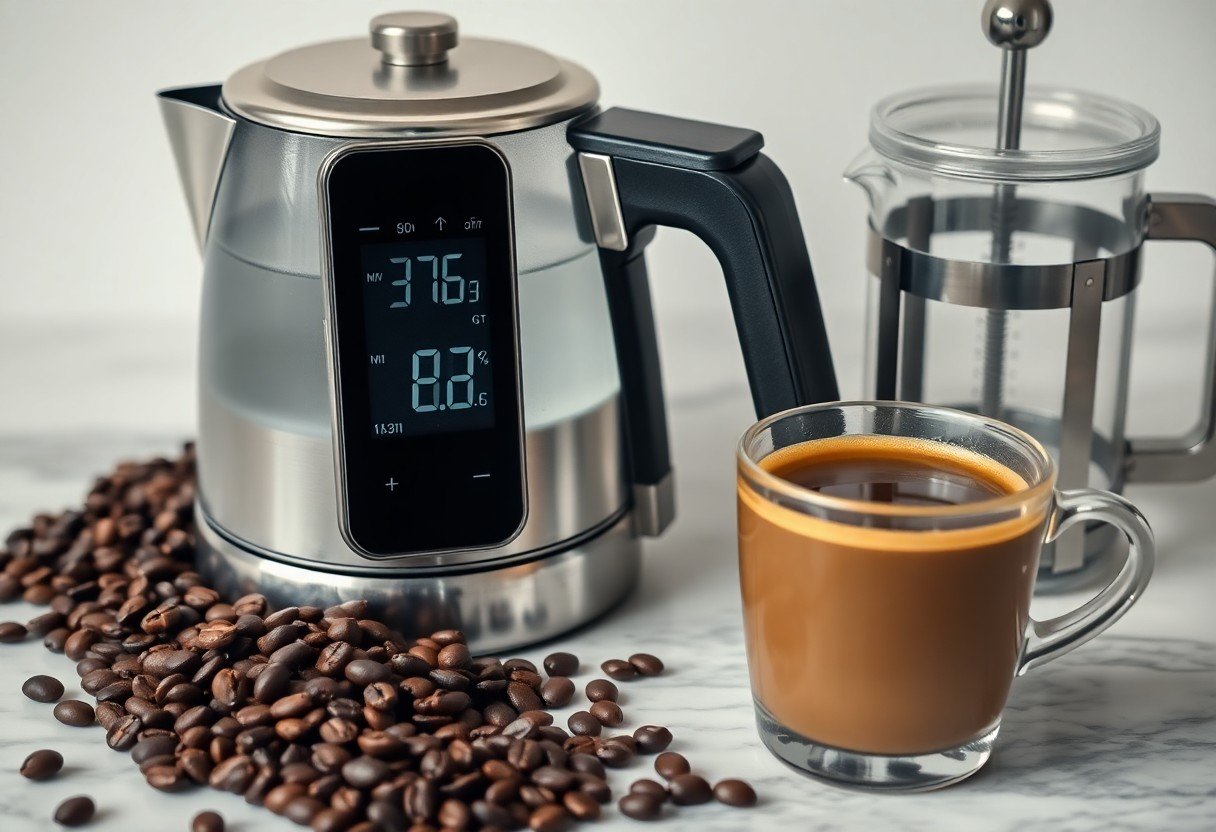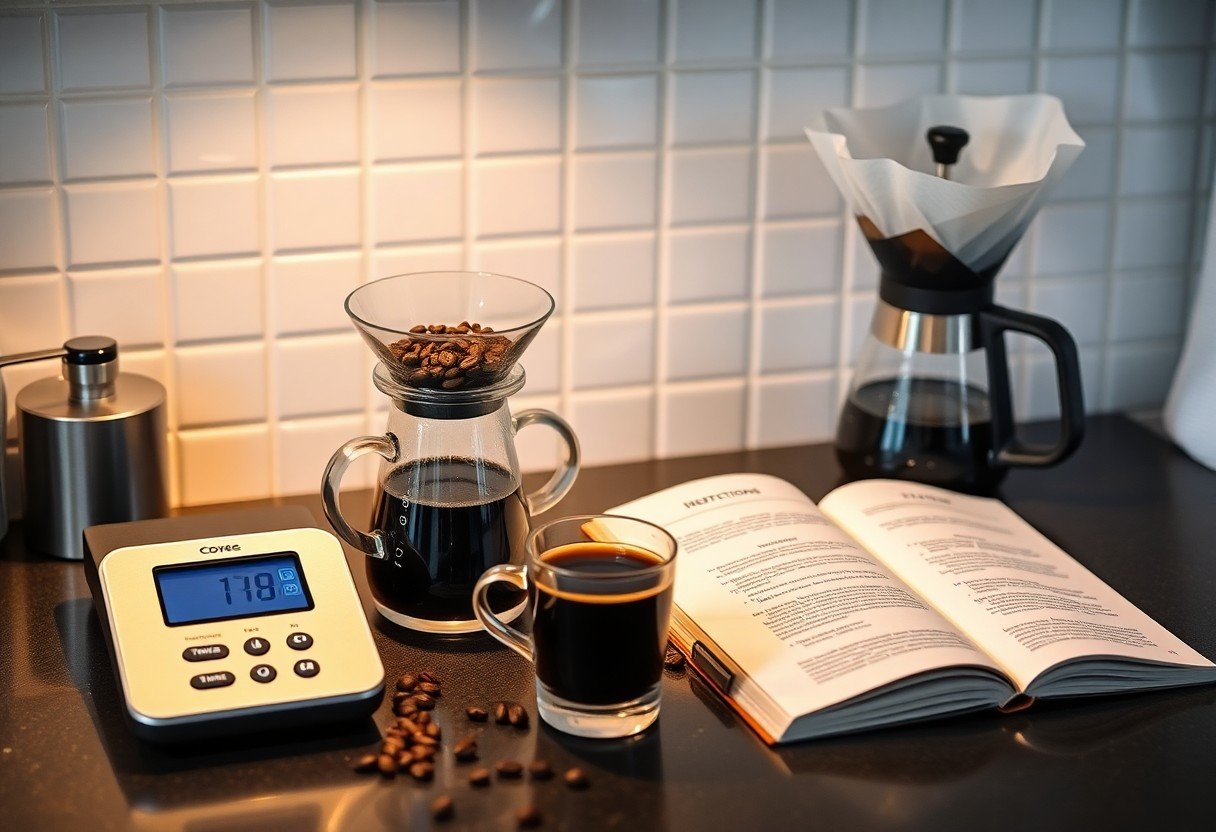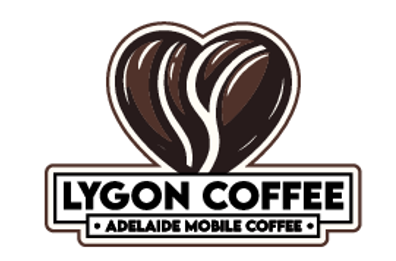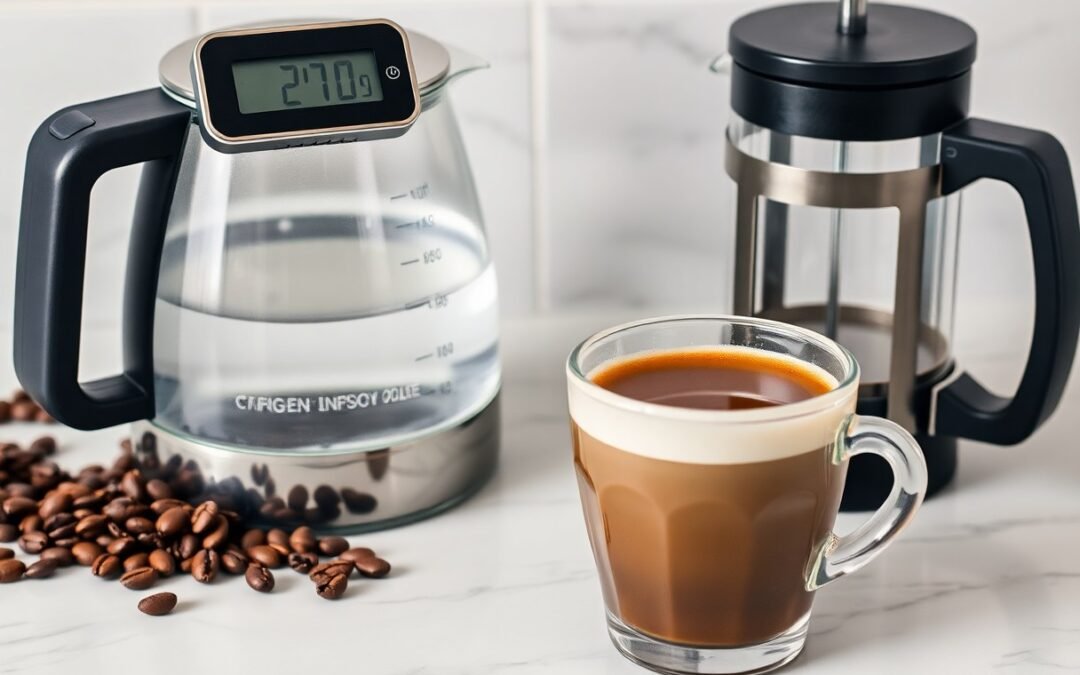Brewing a velvety sophisticated cup of coffee at home requires attention to detail and the right techniques. You’ll discover how to select quality beans, perfect your grind size, and utilize precise brewing methods to enhance flavor and texture. By mastering these steps, you can elevate your coffee experience, allowing you to savor each sip like a barista-crafted cup.
The Essential Elements of Precision Brewing
Precision brewing centers around specific variables that contribute to the flavor and quality of your coffee. Mastering these elements allows you to replicate a café-level experience at home. Key factors include water quality, coffee beans, grind size, brew time, and temperature. By fine-tuning each component, your coffee can achieve that velvety sophistication reminiscent of a professional barista’s craft.
The Importance of Water Quality
Water comprises about 98% of your brewed coffee, making its quality paramount. Using filtered or spring water can enhance flavor clarity and reduce undesired tastes, such as chlorine. Aim for a balanced mineral content to complement the coffee’s taste profile, ideally with around 150 mg/L of total dissolved solids (TDS) for optimal extraction.
Selecting the Right Coffee Beans
Your choice of coffee beans greatly influences the final cup. Beans vary widely in flavor, acidity, and aroma, dictated by their origin, processing methods, and roast levels. Opt for specialty-grade beans that have been ethically sourced, ensuring you enjoy high-quality grounds that reflect their unique flavor profiles.
Specialty-grade coffee beans are often rated by cupping experts, with scores above 80 indicating superior quality. Beans from distinct regions exhibit varying tastes; for instance, Ethiopian coffees may offer bright floral notes, while Brazilian beans often present chocolate undertones. Experiment with single-origin selections or blends to discover what satisfies your palate best. Additionally, purchasing freshly roasted beans within a week of roast date allows for maximum flavor, intensifying your brewing experience.

Mastering Techniques for Brewing Temperature
Achieving the right brewing temperature enhances the flavor profile of your coffee. Each type of coffee bean responds uniquely to temperature variations, influencing extraction and taste. Mastering the nuances can lead to consistently optimal results in your cup.
Optimal Temperature Ranges for Different Beans
| Bean Type | Optimal Temperature (°F) |
|---|---|
| Arabica | 195-205 |
| Robusta | 201-211 |
| Light Roast | 185-195 |
| Dark Roast | 195-205 |
Optimal Temperature Ranges for Different Beans
Understanding the optimal temperature range for each bean type ensures that you extract the most desirable flavors. Arabica beans thrive between 195-205°F, while robusta beans prefer slightly higher temperatures of 201-211°F. For lighter roasts, lower temperatures between 185-195°F can bring out delicate notes, whereas dark roasts benefit from staying within 195-205°F to highlight their bold characteristics.
Tools for Achieving Consistent Temperature Control
Precision brewing requires reliable tools to maintain consistent temperature control. Thermometers, temperature-controlled kettles, and sous vide equipment can help you reach the exact brewing temperature needed for your coffee. Investing in a high-quality kettle with adjustable settings allows you to experiment and hone in on the best temperature for your preferred brews.
Tools for Achieving Consistent Temperature Control
| Tool | Function |
|---|---|
| Digital Thermometer | Measures water temperature accurately |
| Temperature-Controlled Kettle | Heats water to precise temperatures |
| Sous Vide Immersion Circulator | Maintains a stable temperature for precision |
| Smart Coffee Scale | Tracks both weight and temperature during brewing |
Grind Size: The Key to Extraction
Achieving the perfect cup relies heavily on grind size, which directly influences extraction rates during brewing. Finer grinds increase surface area, allowing for quicker extraction, while coarser grinds slow it down. Balancing these factors ensures that you extract optimal flavors from your coffee, avoiding under or over-extraction, which can lead to undesirable taste profiles, such as bitterness or sourness. Experimenting with different grind sizes for your chosen brewing method will help you pinpoint the ideal consistency for a velvety, sophisticated cup.
Grinding Techniques for Uniformity
For consistent grind size, using a burr grinder is necessary. Unlike blade grinders that produce uneven particles, burr grinders crush coffee beans uniformly, allowing for more predictable extraction. Adjusting the settings on your burr grinder lets you customize the grind size to suit various brewing methods, ensuring that every cup reflects the desired flavor profile. Regular cleaning of your grinder also enhances performance and consistency.
How Grind Size Affects Flavor Profiles
The grind size you choose plays a pivotal role in determining the flavor profile of your brew. For instance, a fine grind often results in a bolder, richer taste, while a coarser grind emphasizes bright, acidic notes. The extraction process varies with grind sizes; finer grinds generally lead to quicker extraction of bitter compounds, while coarser grinds take longer to reveal subtle flavors. Balancing these elements helps you achieve a nuanced cup that highlights the unique characteristics of your coffee beans.
In espresso, the fine grind size extracts oils and flavors rapidly, often resulting in a rich, intense shot with notable crema. Conversely, for a French press, a coarser grind helps maintain a smooth mouthfeel while allowing the natural sweetness to shine through. Different brewing methods require specific grind sizes, and understanding these nuances allows you to explore a spectrum of flavor experiences. Conducting taste tests with varying grind sizes will further refine your palate and brewing approach, leading to exceptional results in your home brewing journey.
Brewing Methods That Elevate Your Cup
Different brewing methods can significantly enhance the flavor profile of your coffee. From the precision of pour-over to the robust nature of French press, each technique brings unique characteristics to your cup. Experimenting with varying methods allows you to discover your preferred taste and aroma, ensuring that every sip is a delightful experience.
Step-by-Step Guide to Pour Over Brewing
The pour-over method provides control over the brewing variables that impact flavor. Begin by boiling water to around 200°F and weigh out 20 grams of coffee and 300 grams of water. Rinse your filter and add coffee grounds. Start pouring hot water in a circular motion, allowing the coffee to bloom for 30 seconds. Continue pouring water gradually, maintaining a steady flow until you’ve reached the desired amount. Let it drip completely before enjoying your carefully crafted cup.
Step-by-Step Guide to Pour Over Brewing
| Step 1: | Boil water to 200°F. |
| Step 2: | Weigh 20g of coffee and 300g of water. |
| Step 3: | Rinse your filter; add coffee grounds. |
| Step 4: | Pour water in circles to bloom for 30 seconds. |
| Step 5: | Pour gradually until the desired amount is reached. |
| Step 6: | Allow coffee to drip completely before serving. |
Exploring French Press and AeroPress Techniques
The French press allows oils and fine particles to remain in your brew, resulting in a rich, full-bodied flavor. Start with coarsely ground coffee and steep it for four minutes before plunging. The AeroPress, on the other hand, combines immersion and pressure brewing, enabling precise control over brewing time and temperature, often delivering a cleaner cup. With faster brewing and diverse techniques, it’s versatile and ideal for experimenting with different flavors.
In the French press, using a coffee-to-water ratio of 1:15 enhances the flavor while minimizing bitterness. After steeping, pour into your mug, and enjoy the robust taste. The AeroPress can yield a concentrated coffee similar to espresso. Utilize the inverted method for a richer flavor; steep grounds for 30 seconds, then press gently. Both methods showcase the unique qualities of your coffee beans, inviting you to explore and refine your brewing preferences further.

The Role of Timing in Brewing Success
Mastering timing in brewing is crucial for extracting the best flavors from your coffee beans. Too short or too long a brew can lead to under-extraction or over-extraction, impacting the balance and overall taste of your cup. Understanding the nuances of timing allows you to unlock the full potential of your selected beans and creates a consistent, sophisticated flavor profile in every brew.
Timing Extracts: Understanding Brew Duration
Brew duration directly influences the extraction of flavors from your coffee grounds. For a balanced cup, aim for a brew time between 3 to 4 minutes for most methods like pour-over and immersion. Too quick can yield sour notes, while too lengthy brewing can veer into bitter territory. Adjusting your brew time based on your grind size and coffee type will provide the precision needed for that velvety cup.
Techniques for Perfectly Timed Pour Over and Immersion
Achieving optimal timing in pour-over and immersion brewing requires attention to detail. In pour-over, swirling the grounds evenly and employing a steady pour helps maintain consistency in extraction. For immersion methods, maintaining a precise steeping time, typically between 4 to 5 minutes for French press, controls flavor development effectively.
For pour-over, start with a bloom phase—wetting the grounds for about 30 seconds to release CO2—before continuing with a meticulous pour pattern over 2 to 3 minutes. Utilizing a timer ensures you stay within the ideal range, where flavors blossom without bitterness. In immersion methods, gently stir during the steeping process to enhance extraction and consider using a timer for a controlled, repeatable experience. Both techniques rely on exact timing and attention to detail for that velvety sophistication in your coffee cup.
Summing up
The key to achieving a velvety sophisticated cup at home lies in precision brewing. By paying attention to your coffee grind size, water temperature, and brew time, you can unlock the full flavor profile of your coffee. Invest in quality beans and an accurate brewing method that suits your taste preferences. Consistency is necessary, so keep track of your variables and adjust as needed. With these techniques, you can elevate your daily coffee ritual to a luxurious experience, all from the comfort of your kitchen.
FAQ
Q: What equipment do I need for precision brewing?
A: Essential equipment includes a scale for measuring coffee and water, a precision kettle with temperature control, and a high-quality coffee maker or pour-over setup.
Q: How do I choose the right coffee beans for a velvety texture?
A: Opt for freshly roasted, high-quality Arabica beans with tasting notes that complement a smooth and rich flavor profile, such as chocolate or caramel.
Q: What is the ideal coffee-to-water ratio for brewing?
A: A standard recommendation is a 1:15 coffee-to-water ratio. For a richer cup, experiment with ratios ranging from 1:12 to 1:16 based on personal preference.
Q: How can I ensure consistent water temperature during brewing?
A: Use a kettle with temperature control. Aim for a brewing temperature between 195°F to 205°F (90°C to 96°C) for optimal extraction.
Q: What brewing techniques enhance the velvety quality of coffee?
A: Techniques like blooming, controlling brew time, and employing a slow, steady pour can enhance flavor extraction and contribute to a velvety texture.

